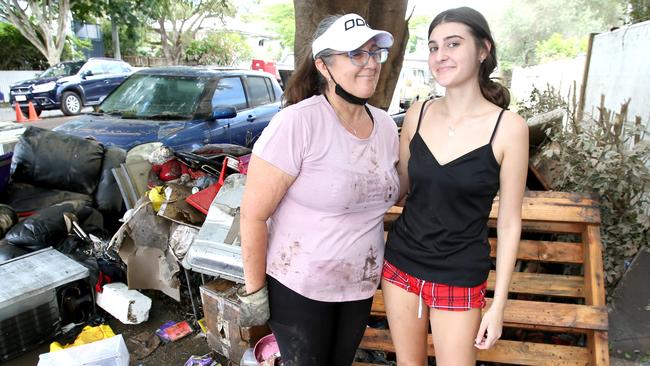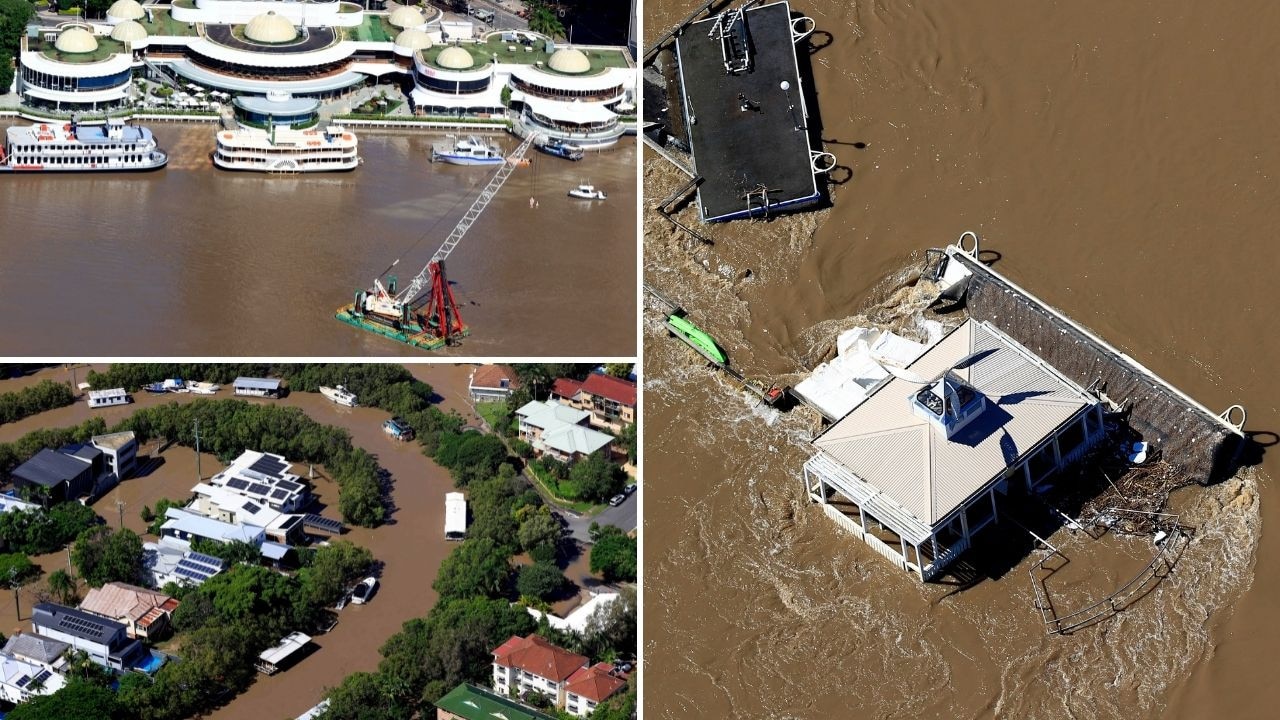Palaszczuk government releases new building guidelines for flood-affected homes
The state government has released sweeping changes to new building guidelines for flood-affected homes which industry experts say is a “great” step forward in protecting Queenslanders from devastating natural disasters.
QLD News
Don't miss out on the headlines from QLD News. Followed categories will be added to My News.
Raising outlets, moving appliances and opening up staircases are among the number of new building guidelines released by the Palaszczuk Government in a bid to improve the flood resilience of South East Queensland homes.
As a part of the Resilient Home Rebuild Program, funding is available for some retrofit strategies under the Resilient Homes Fund in either liveable rooms or areas that have been assessed as flood affected following the February floods.
Senator Murray Watt, Emergency Management Minister said the new suggestions would help the more than 7,000 Queensland homes that were damaged by the floods this year across 37 LGAs.
“With the $741 million Resilient Homes Fund – which is being delivered through the jointly funded Commonwealth-State Disaster Recovery Funding Arrangements (DRFA) – we are working hard to assist as many flood-impacted people as possible, as soon as possible,” he said.
As of June 28, more than 3000 people had registered their interest in the Resilient Homes Fund including 391 in the voluntary buyback scheme, 1072 in the house-raising, 1145 in the retrofit and 563 being unsure.
Guidelines for the retrofit and rebuild scheme include wet-proofing and elevating the home before building as well as investing in flood insurance, noting that using flood resilient design principles could help reduce high premiums for houses in flood-risk zones.
Strategies include making the bottom rise of the stairs removable for easy cleaning as well as using open stairs made from flood resistant material.
It also includes raising items like aircon units, switchboards, hot water units, water tank pump, cabinetry, kitchen appliances, storage shelves, washing machine, dryer and power outlets.
To reduce damage and mould in walls, the guidelines suggests installing non-cavity walls, using flood resilient framing, painting existing pine, using rigid cell insulation, using flood resilient wall linings, adding additional weep holes and using water impervious mouldings.
Funding will also be provided for flood resilient flooring and skirting, grout and sealant and surface control on sub-floor ground.
Meanwhile, sliding doors could be replaced by swing or face of wall sliding doors, hollow core doors would be replaced with solid core, flood resilient cabinetry would be installed, cabinetry kick boards would be removable, permeable doors would be retrofitted onto garage doors and separate circuits would be installed on lower and upper levels.
Other suggestions for the yard, not covered by the fund, included creating a swale, a rain garden system, increasing garden absorption, using permeable fencing, increasing permeable surface areas, replacing garden structures blocking natural flow and anchoring external structures.
General Manager of Building Services at Master Builders Queensland, Tony Mitchell, said the guidelines were a “great move forward” for flood-affected Queenslanders.
“I think it’s a great start, and a good platform for everyone to turn to and get them thinking in the right direction,” he said.
“In the past, we’ve just rebuilt what we’ve already had, but this time we’re moving forward and improving.”
Mr Mitchell said each individual home will need to be assessed with some homes able to introduce a number of the suggestions, while others will be better off doing the voluntary buyback.
“The one thing I would suggest is that people would need to be mindful of that there could be LGA requirements or building requirements that they should check with first before going ahead.”
It comes as the state government has asked for feedback on the new sellers disclosure scheme.
Attorney-General Shannon Fentiman said it’s the scheme would ensure buyers can “efficiently and transparently” access information they need to make better decisions about property dealings.
“The proposed scheme would make it mandatory, with limited exceptions, for a seller of freehold land to disclose relevant information to a proposed buyer in a single document along with any prescribed certificates,” she said.
“The prescribed certificates will include a specific ‘body corporate certificate’ which highlights important information for buyers about a lot that is for sale in a community titles scheme. A draft of the ‘body corporate certificate is also being released for consultation.








